 Visiting Byblos is like peeling an onion - you get layers upon layers. According to guides, Byblos is one of the oldest continuous inhabited cities in the world. Archaeologists have uncovered relics of Stone Age inhabitants living 7,000 years ago. In the 3rd millennuim BC, the city was a powerful Phoenician port (inventors of the alphabet?). The city was assimilated into the Roman empire. During the crusades, Byblos became one of the Christian coastal strongholds* to stand against the Islamic troops. After the successful expulsion of the crusaders, the Arab conquerers also contributed their share to the history of Byblos. During World War 1, a Turkish detachment was said to be occupying the crusader stronghold (which is still standing today). Today it is one picturesque town to visit and reminisce the past.
Visiting Byblos is like peeling an onion - you get layers upon layers. According to guides, Byblos is one of the oldest continuous inhabited cities in the world. Archaeologists have uncovered relics of Stone Age inhabitants living 7,000 years ago. In the 3rd millennuim BC, the city was a powerful Phoenician port (inventors of the alphabet?). The city was assimilated into the Roman empire. During the crusades, Byblos became one of the Christian coastal strongholds* to stand against the Islamic troops. After the successful expulsion of the crusaders, the Arab conquerers also contributed their share to the history of Byblos. During World War 1, a Turkish detachment was said to be occupying the crusader stronghold (which is still standing today). Today it is one picturesque town to visit and reminisce the past.
A Crusader guard tower still overlooks the dock although the archers are long dead and gone.
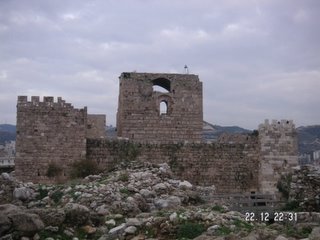
The main attraction of Byblos - The castle of the Knights of the Cross. Build in 1103 fundamentally for the pratical purpose of defence, the stronghold doesn't score points in aesthetic value. That it is still standing today after withstanding centuries of warfare and natural calamities proves indeed that it served its purpose.
 Roman columns are inserted within the wall base to stregthen the foundation of the castle. Some of the building stone bricks of the walls were recycled from the Roman ruins. Perhaps it was Roman architecture that helped to preserve the castle. Hmmm...
Roman columns are inserted within the wall base to stregthen the foundation of the castle. Some of the building stone bricks of the walls were recycled from the Roman ruins. Perhaps it was Roman architecture that helped to preserve the castle. Hmmm...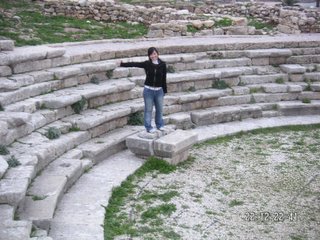
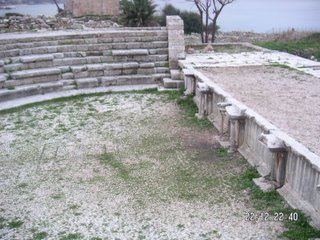 Ruins of Roman street theatre featuring female gladiator! "Gladiator! We salute you!"
Ruins of Roman street theatre featuring female gladiator! "Gladiator! We salute you!" The Church of St. John the Baptist build by the Crusaders. It was rebuild several times after the crusades due to damage.
The Church of St. John the Baptist build by the Crusaders. It was rebuild several times after the crusades due to damage.*Crusaders were said to have occupied and fortified the Lebanese coastal regions from Tripoli, Byblos, Beirut, Sidon (North to South) perhaps to form a line of defence from Europe to Jerusalem. They were more successful at holding the coast where they are more easily resupplied by ships from Italy.
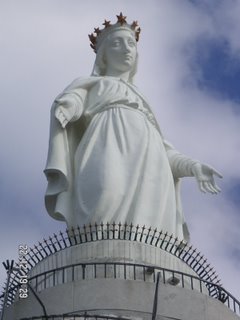 Lady of Lebanon - Statue of Virgin Mary
Lady of Lebanon - Statue of Virgin Mary At the base of the statue is a curled staircase that leads to a spectacular view of the city of Jounieh.
At the base of the statue is a curled staircase that leads to a spectacular view of the city of Jounieh.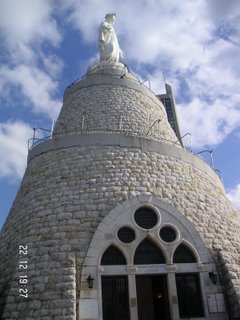 Within the base of the statue houses a chapel
Within the base of the statue houses a chapel


